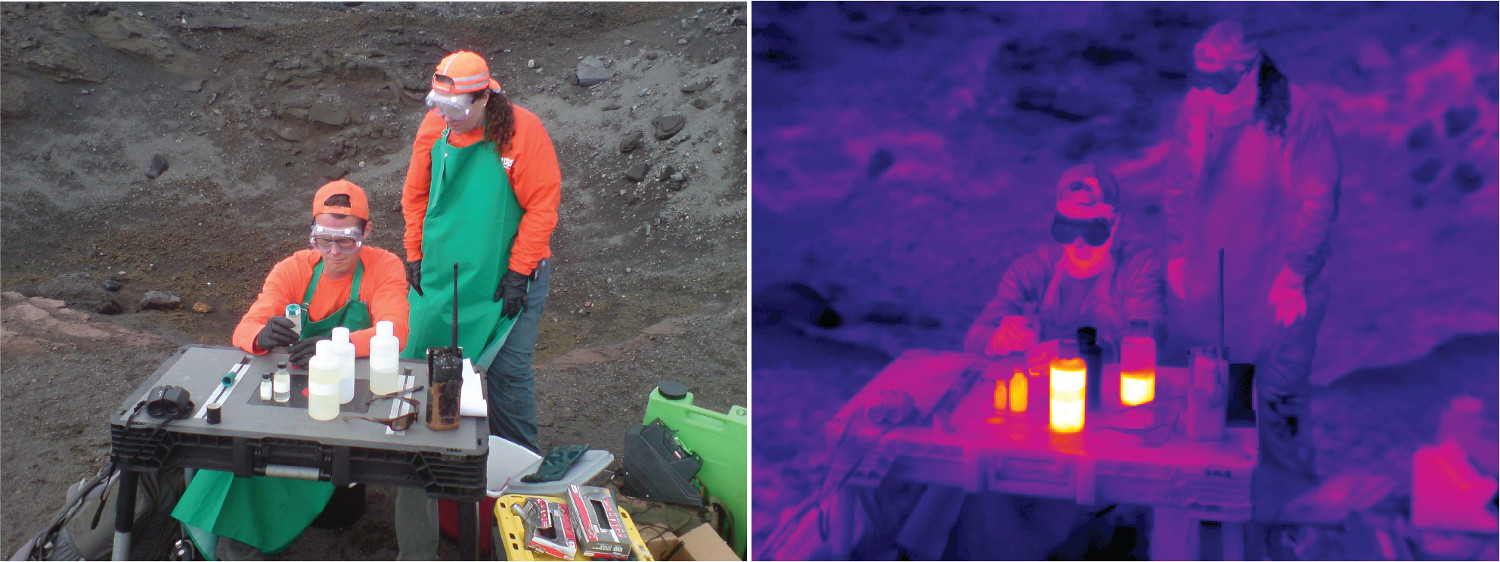
HVO scientists performed some preliminary tests of the water at the caldera rim minutes after it was collected. The thermal image shows that the water sample, in the plastic bottles, remained hot. (USGS images by M. Patrick)
(BIVN) – The USGS Hawaiian Volcano Observatory today published video showing an unmanned aircraft system, or UAS, sampling water from the Kīlauea Volcano crater lake, and scientists already have some preliminary test results to share.
On October 26, a UAS flight into the collapsed Halemaʻumaʻu crater was conducted with permission and coordination with Hawai‘i Volcanoes National Park. The UAS hovered above the steaming water that has been rising at the bottom of the crater since July, and collected a sample in a sterilized plastic sleeve for scientists to analyze.
The information is used to assess hazards at Kīlauea’s summit, and is shared with the National Park Service and emergency managers, HVO said.
Precautions were taken to ensure the aircraft and sampling mechanism were sterile, and would return safely from the pond, the scientists say.
Minutes after the sample was collected, scientists performed some preliminary tests of the water at the caldera rim. On Wednesday, HVO had this to report:
Initial testing of the Kīlauea summit crater lake water sample revealed a pH of 4.2. This value is acidic, though not as low as at some other volcanic lakes around the world, which can have pH values near or lower than zero. The conductivity of the water, related to the amount of dissolved solids, was above the upper limit of our current sensor. We were unsuccessful in obtaining a direct measurement of the lake’s temperature, but recent measurements by a thermal camera on the rim of the crater indicate a maximum water temperature of 65-75 ° C.
More in-depth analyses of the water will be conducted by scientists from the USGS California Volcano Observatory.

by Big Island Video News3:12 pm
on at
STORY SUMMARY
HAWAIʻI VOLCANOES NATIONAL PARK - New video shows an unmanned aircraft system collecting a water sample from the crater lake in Halema‘uma‘u, and initial tests results have been shared.